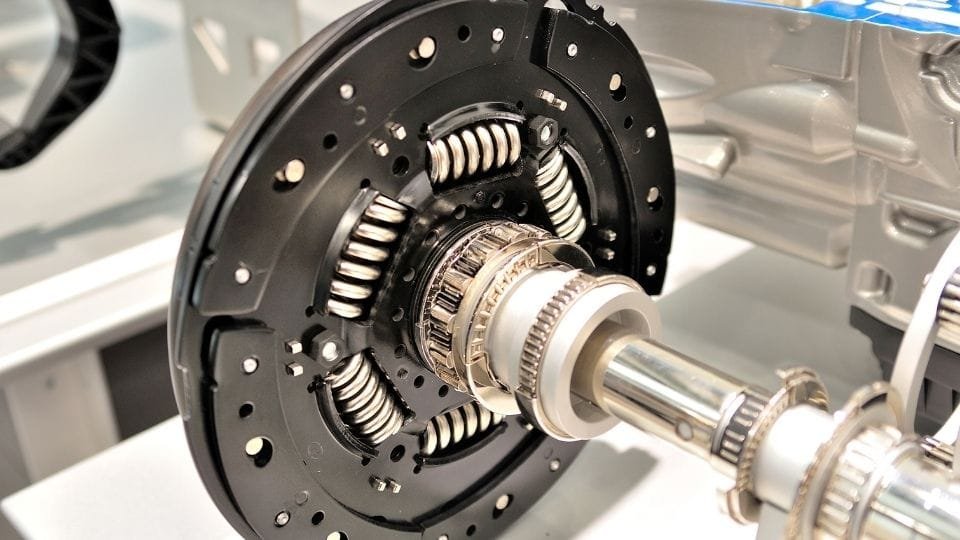Let’s say you’ve been driving your 2013 Ford Focus for years without a hitch. It’s compact, nimble, and a breeze to parallel park in tight city spaces. But recently, something’s been off. The engine revs, but the car doesn’t move as quickly.
Gear shifts feel delayed, and sometimes you smell something faintly burnt after heavy traffic. If this sounds familiar, your clutch might be on its way out.
A clutch is one of those parts you don’t think much about until it starts giving trouble. Whether your car is showing signs of slipping or you’ve been told during a routine check that it’s time for a replacement, understanding what goes into clutch replacement—especially the cost—is key.
In this detailed guide, we’ll walk through the entire process, from early symptoms to repair costs, and help you figure out what to expect if you’re heading into a clutch job.
What Does a Clutch Actually Do?
In simple terms, the clutch is what connects your engine to your wheels in a manual transmission vehicle. When you press the clutch pedal, you temporarily disconnect the engine power so you can shift gears smoothly. Once the gear is engaged, you release the pedal, and power flows back to the wheels.
The clutch is made up of several key components:
- Clutch disc – This is the part that wears out most frequently. It’s similar to brake pads and grips the flywheel.
- Pressure plate – Applies pressure to the clutch disc to keep it engaged with the flywheel.
- Flywheel – A heavy disc attached to the engine. It’s the surface the clutch disc contacts.
- Throwout bearing – Helps disengage the clutch when you press the pedal.
- Clutch fork and hydraulic system – These move the parts when you operate the pedal.
Because these parts constantly deal with friction and heat, they wear down over time—and eventually, they’ll need to be replaced.
How Long Does a Clutch Last?
Clutch life varies widely depending on the driver, vehicle type, and usage. Here are general estimates:
| Vehicle Type | Average Clutch Life |
| Compact cars (e.g., Honda Civic) | 80,000 – 120,000 miles |
| Performance cars (e.g., Subaru WRX) | 50,000 – 80,000 miles |
| Trucks/SUVs (e.g., Jeep Wrangler) | 60,000 – 100,000 miles |
Aggressive driving, towing heavy loads, or riding the clutch can reduce its lifespan dramatically. On the other hand, gentle shifting and highway driving can make it last much longer.
Common Signs That Your Clutch Needs Replacement
Before diving into the cost, it helps to know what to watch for. These are the most common signs of a worn-out or failing clutch:
1. Slipping
This means the clutch isn’t holding a firm grip on the flywheel. You’ll notice the engine revs higher without a corresponding increase in speed—especially in higher gears.
2. Hard Shifting
If it’s becoming difficult to shift gears, or if you hear grinding when changing gears, the clutch may not be disengaging properly.
3. Burning Smell
A strong, burnt odor—especially after stop-and-go traffic or climbing hills—can be a sign of clutch slippage or excessive heat.
4. Spongy or Stiff Clutch Pedal
If your clutch pedal feels different than usual—either too soft, too hard, or with inconsistent resistance—it could point to internal issues.
5. Poor Acceleration
Even though your engine seems to be working fine, your vehicle isn’t picking up speed as it should. This is often a sign the clutch is no longer transferring power effectively.
How Much Does It Cost to Replace a Clutch?
Now for the main question—how much are you looking at if your clutch needs to be replaced?
Clutch replacement cost depends on:
- Vehicle make and model
- Labor rates in your area
- Whether additional parts (like the flywheel or hydraulic system) need attention
Let’s break it down.
1. Clutch Kit Costs (Parts Only)
A full clutch kit includes the clutch disc, pressure plate, and throwout bearing. Some may include a flywheel or pilot bearing as well.
| Vehicle Type | Average Kit Cost |
| Economy Cars (e.g., Toyota Corolla) | $150 – $350 |
| Mid-range Sedans (e.g., Mazda 6) | $300 – $600 |
| Performance Cars (e.g., BMW M3) | $500 – $1,200 |
| Trucks/SUVs (e.g., Ford Ranger) | $400 – $900 |
Some newer vehicles may have dual-mass flywheels, which are more expensive and not always reusable.
2. Labor Costs
Labor makes up the bulk of the cost. Replacing a clutch is labor-intensive and can take anywhere from 4 to 10 hours, depending on the vehicle.
| Shop Type | Labor Rate (per hour) | Estimated Labor Time | Labor Total |
| Independent Garage | $90 – $120 | 4 – 6 hours | $400 – $720 |
| Dealership | $120 – $180 | 6 – 10 hours | $720 – $1,800 |
Smaller front-wheel-drive cars often require the engine or transmission to be partially dropped, which adds to the time.
3. Total Clutch Replacement Cost
Here’s a general overview of what you might expect to pay all-in:
| Vehicle Type | Total Replacement Cost |
| Small Cars | $500 – $1,000 |
| Midsize Sedans | $800 – $1,400 |
| Trucks/SUVs | $900 – $1,800 |
| Sports Cars / High-Performance | $1,200 – $2,500+ |
It’s a wide range, so getting a specific quote for your make and model is important.
Should You Replace the Flywheel Too?
In many cases, the flywheel can be resurfaced and reused. But if it’s a dual-mass flywheel (common in newer vehicles), replacement may be required.
Flywheel Replacement Cost:
- Standard Flywheel: $100 – $300
- Dual-Mass Flywheel: $400 – $1,200
Mechanics will often inspect the flywheel during the clutch job and advise whether it should be replaced.
Other Parts That Might Need Attention
During a clutch job, it’s smart to address other components that are hard to reach once the transmission is removed.
These may include:
- Rear main seal (prevents oil leaks): $150 – $400
- Clutch slave or master cylinder (controls hydraulic pressure): $200 – $500
- Pilot bearing or bushing: Usually included in full kits
Spending a little more on these now can save a lot later.
DIY Clutch Replacement: Is It Worth It?
Clutch replacement is not a casual DIY job unless you have mechanical experience and a well-equipped garage. You’ll need:
- A jack or lift
- Engine hoist or transmission jack
- Torque wrenches
- Time and patience
Pros of DIY:
- You can save $400–$1,000 on labor
Cons:
- It’s difficult and time-consuming
- Mistakes can be costly
- You’ll be without a car if it takes longer than expected
Unless you’re confident, it’s better to let a professional handle it.
How to Get the Best Deal
1. Get Multiple Quotes
Prices vary between shops. Call a few independent garages and dealerships. Ask if the quote includes:
- Parts
- Labor
- Flywheel inspection or resurfacing
- Warranty
2. Ask About Warranty
Many shops offer 12-month or 12,000-mile warranties on parts and labor. Ask what’s covered.
3. Bring Your Own Parts (Optional)
Some mechanics will install customer-supplied parts. Just be sure the parts are high quality and compatible. Labor warranties may not apply.
Preventing Premature Clutch Wear
Here are some habits that help your clutch last longer:
- Avoid riding the clutch: Don’t rest your foot on the pedal while driving.
- Use the handbrake on hills: Don’t hold the car using the clutch.
- Don’t hold the clutch at lights: Shift into neutral instead.
- Shift smoothly: Avoid aggressive or rushed gear changes.
- Get issues checked early: Fixing small problems can prevent full failure.
Final Thoughts
Clutch replacement isn’t cheap, but it’s a normal part of owning a manual transmission vehicle. How much you spend depends on your car, where you live, and whether you address other components during the repair.
To recap:
- A full clutch replacement typically costs between $800 and $1,800
- High-performance and luxury models may run over $2,000
- Labor is the biggest portion of the cost
- Additional parts like the flywheel or hydraulic cylinders can increase the total
- Good maintenance and careful driving can extend clutch life significantly
If your car is showing signs of clutch failure, don’t wait until it leaves you stranded. Get it checked, compare quotes, and make an informed repair decision.



